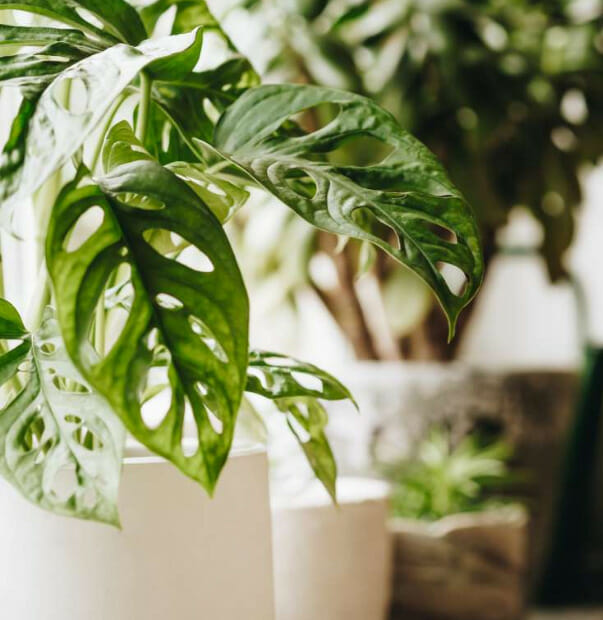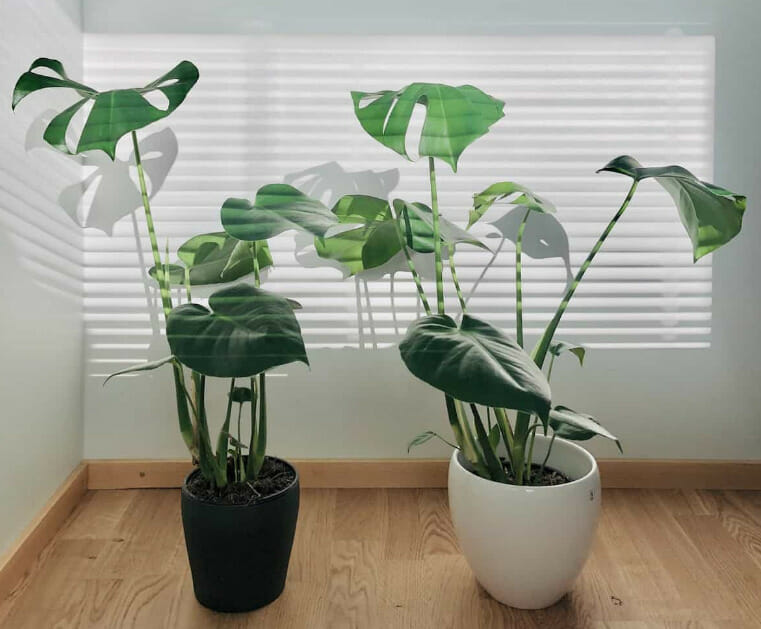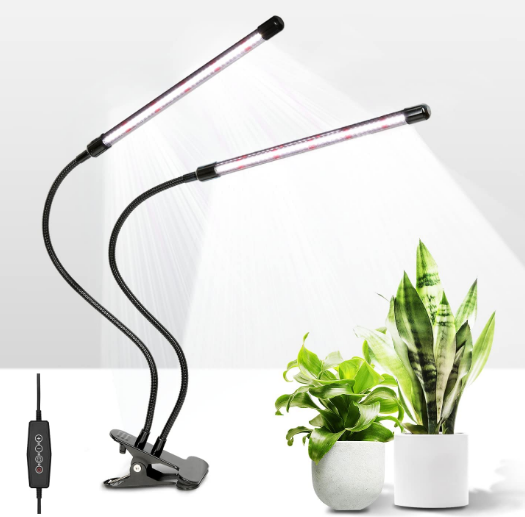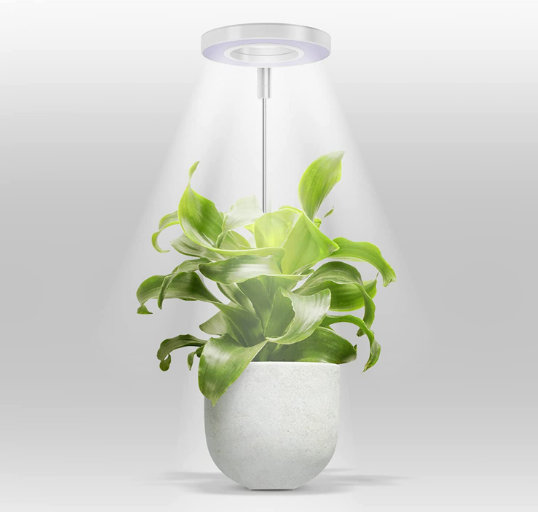The swiss cheese plant is a perfect beautiful addition to your houseplant collection. The large heart-shaped perforated leaves of Monstera can beautify any indoor space. However, while placing this plant at a designated corner according to your interior settings, it is necessary to ensure that the light requirements of Monstera are being fulfilled. But how to know if your swiss cheese plant is getting enough light? This can be overwhelming and worrying for beginners. So, worry no more! This blog provides a complete guide on Monstera light conditions and much more. So without further ado, let’s dig in!

1. Necessary Light Conditions for Monstera?
Monstera is a tropical plant from the rainforests of Mexico and South America. It thrives on indirect sunlight from the rainforest canopy. So, how much sunlight does your swiss cheese plant needs? Well, it depends on how much you want it to grow. Outdoors Monstera can grow up to 60 feet, but indoors Monstera can grow 10-15 feet tall.
You can also measure the Monstera light conditions by two important factors. These two factors include:
- The intensity of light and
- The duration
Let’s find out these factors for your lovely swiss cheese plant!
1.1. Light Intensity Needed for Monstera
Light intensity means the amount of light. It can be bright, moderate, or dim. Not only that, but it can also be termed as direct light or indirect light. How do these different intensities influence Monstera’s growth? What intensity of light is good for Monstera? Let’s dig deeper to find answers to these questions.
- Bright and Direct Sunlight
Monstera is the native of Mexico’s rainforests, therefore, it doesn’t need direct sunlight. Exposing your swiss cheese plant to direct sunlight can make its leaves dry. Moreover, direct sunlight can seize its growth and turn its leaves yellow.
So, if your swiss cheese plant seems droopy or yellow, it has been exposed to too much sunlight. It’s time to change the spot of your Monstera to make it lively again.

- Indirect and Bright Sunlight
The ideal intensity for Monstera is bright and indirect sunlight. Monstera usually climbs the trees’ trunks using its deep aerial roots to get light. But it does not receive direct sunlight because they grow under the shade of the canopy.
If your house has a spot where the sunlight reaches indirectly, then this is the best spot for your Monstera to grow. If you want to see the big glossy leaves of Monstera, then place it in a spot where the bright sunlight reaches indirectly.
- Low Sunlight
Monstera prefers indirect light but still requires bright light to grow big leaves. In low light, it will grow, but its size will be limited. If it is not getting the right amount of light, the leaves will bend towards the light.
This is a sign that your swiss cheese plant is not getting the required amount of light! Although it can grow under low sunlight, the leaves will be smaller. So, if you do not want that, change the plant’s location. You can move it closer to the window where the sunlight reaches indirectly.
Related Article: Monstera Deliciosa Care Indoors: How to Grow Swiss Cheese Plant Indoors?
1.2. How Much Sunlight does Monstera Require?
Sunlight is the most critical factor for plants’ development and better growth. It is not wrong to say that their lives depend on sunlight. So, how many hours of sunlight are necessary for Monstera? After talking about the ideal light intensity for Monstera, it’s time to determine the ideal timeframe of sunlight for Monstera.
At least 5-8 hours of bright and indirect sunlight per day is required for the proper growth of Monstera deliciosa. If your swiss cheese plant gets fewer hours of sunlight, it will not grow! Its leaves will turn dark brown or yellow. Furthermore, its soil will take forever to absorb the water.
If you notice any of the signs mentioned above, your Swiss cheese plant is not getting enough sunlight. Another important point is that not all kinds of light will affect your Monstera equally. For instance, it may need less than 8 hours of sunlight during a bright sunny day. On the other hand, dim sunlight may need more hours. It all depends on the intensity of light. During summers, the intensity of sunlight is much higher because the sun will be at its peak. And in fall, the sunlight is much low.
So, if you want your Monstera to stay healthy and shiny, ensure it is getting just the right amount and hours of sunlight. By right, I mean neither too much nor too less.

1.3. What is the Best Spot for Placing Monstera?
As mentioned earlier, Monstera loves indirect bright sunlight. So, please place it in a room having an east or north-facing window. The north-facing window might not let it have bright light, but it is better than having no light. If it is placed near a west-facing window, it will receive too bright light in the afternoon, which is harmful. If that’s the case, try moving your plant and place it where the light does not reach it directly.
The following simple and amazing tips will ensure that your Monstera is getting the right amount of light:
- Rotate Your Plant
If your plant is placed near a window, then only one part will receive the right amount of light. To ensure every part of it is getting enough light, try rotating the plant once a couple of months. It will allow even distribution of sunlight to every part of Monstera. In this way, it will grow lush and extensive leaves.
- Filter the Light
During the summer, the sunlight is too bright for the swiss cheese plant. It can even make it burn! To avoid that, you need to filter that light. Do not worry; it’s not difficult. You can do that by using curtains on the window. Also, you can move the pot a little to ensure it won’t burn.

1.4. Is Too Much Light Harmful to Monstera?
Yes, too much exposure to sunlight is harmful to Monstera deliciosa. It can cause the leaves to burn out and fall. Following are the signs that your Monstera has been exposed to too much sunlight:
- The pot’s soil will dry out quickly because of too much heat. There will be no moisture left for the leaves to grow.
- The air will also become less humid, which is not good for a tropical plant.
- Less humid air and lack of hydration will eventually cause the leaves to turn brown as they have burned.
- As a reaction to too much light, the leaves of Monstera will scald. It will stop the process of photosynthesis and make the plant look yellow.
2. Signs Your Monstera Needs More Light
The appropriate light conditions for monstera are in which intensity of sunlight and duration of exposure are taken care of. Hence, the Monstera receives light is very important for the optimal growth of the plant. If your Monstera isn’t getting enough light, it will tell you! There are a few signs that are indications of low light in Monstera.
- No fenestration or splitting in mature leaves
The holes and splitting in Monstera leaves are known as fenestration. If your Monstera is as old as 3 years and you see no signs of holes, it indicates that your plant needs more light.
- The soil takes longer to d.ry
Monteras like well-draining soil and don’t like wet roots. The soil can dry quickly after the watering session if the plant is getting sufficient sunlight. However, in low-light areas, the soil will take time to dry, and if you water it again, the soil will remain wet for a longer time, causing the risk of root rot. So, if the soil doesn’t dry quickly, then it means that you need to move the plant to a well-lit area.
Related Article: Root Rot in the Potted Plants – How to Fix and Prevent?
- Discoloration in leaves:
Usually, yellow and brown spots occur on Monstera leaves due to watering problems. However, watering is also dependent majorly on light conditions. If the plant doesn’t receive light, the soil remains overwatered, causing leaf discoloration. Move the plant to a brighter corner if you notice any such thing.

3. Can Monstera grow in Grow Lights?
Monstera needs at least 10 to 12 hours of bright, indirect light daily. So if you live in an area where the weather is cold and the sun is not available that frequently, you can use grow lights for Monstera. Full-spectrum artificial light is good for Monstera. However, blue light is beneficial for leaf growth, as the leaf absorbs blue light and helps the plant in making energy through photosynthesis. A combination of red/blue spectrum light is best for growing Monstera indoors.
Related Article: What’s the Best Grow Light for Monstera?
3.1 Recommended Products:

Full Spectrum Clip Plant Growing Lamp
- Full spectrum light
- Auto ON/OFF
- 6000K White Light: Equipped with 10 Red + 74 White LED
- 3 modes & 5 dimmable leve
- Sturdy and flexible neck

- Three light spectrum models: white, yellow, mix light.
- Adjustable height
- Provides uniform light
- 3 timer options

- Exceptional illumination and versatility
- Flexible neck and adjustable height
- Provides bright, natural light that will help plants thrive.
- Full Spectrum light
4. Conclusion
The above-mentioned Monstera light conditions will help you grow a delightful and vibrant Monstera in your house. To maintain the growth and health of a monstera deliciosa in your home, ensure that the plant receives indirect bright sunlight.
If you enjoyed this article, visit our website for more articles.
